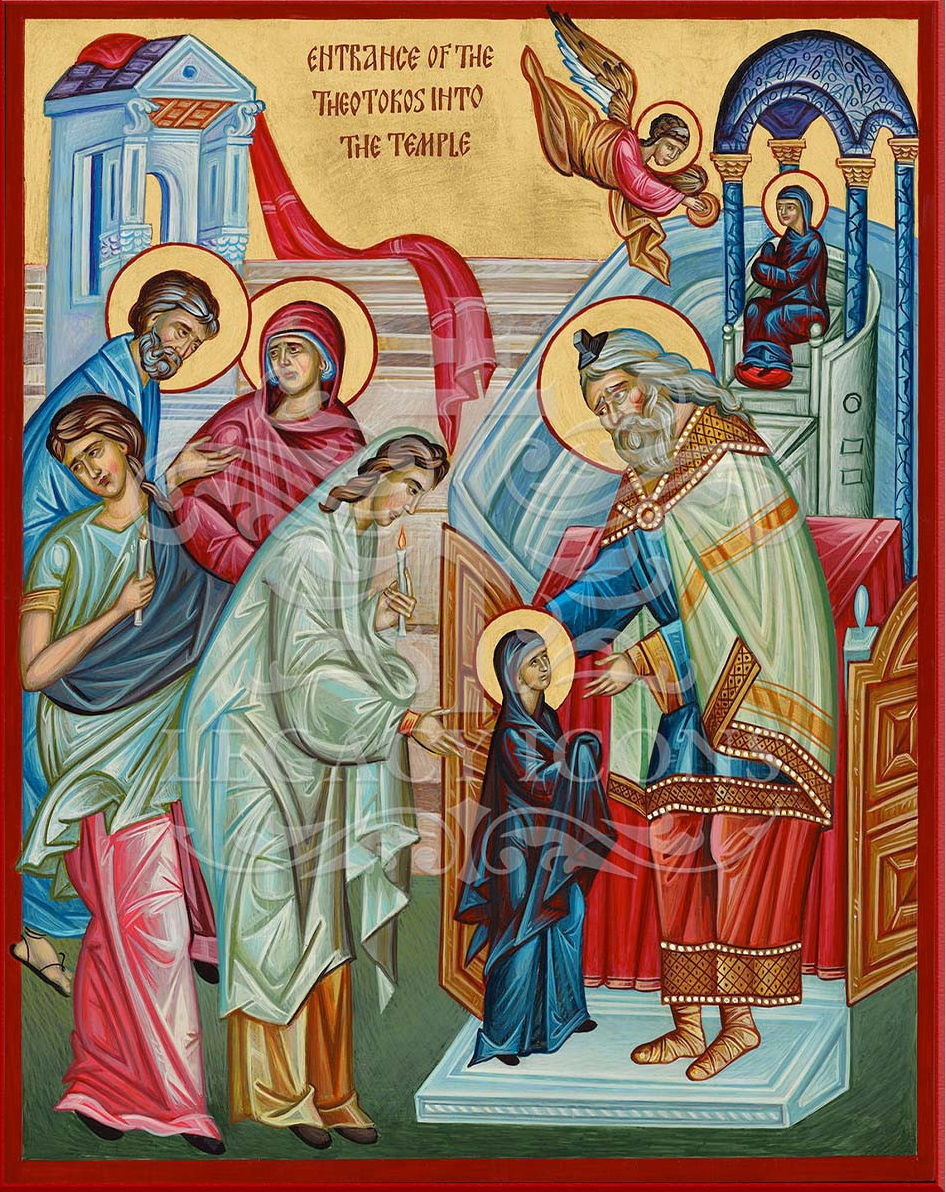Reflections on the Birth of the Theotokos
This post comes from an email in the "Walk Through the Church Year" series which goes out to folks who sign up to receive two emails per month about major feasts and selected commemorations in the liturgical calendar. To receive these emails in your inbox, sign up here.
The original email was sent out in September of 2024.
by Ephraim
"The Birth of the Theotokos is the final preparation of humanity to receive the Divinity"
– Michel Quenot from The Icon: Window on the Kingdom
![]()
Nativity of the Theotokos, by the hand of Georgi Chimev
I was chatting with a colleague and friend, Reader John about this the other day (occasionally we do get a chance to have hallway chats about theology and Tradition!) and we were sharing some ideas about Mary, the Mother of God, being born and then being committed to being raised in the temple in relation to her being called "most pure" or "most holy.” As she is also known as the New Eve, we wondered at the nature of her growing up in the temple (a kind of Eden) and being spiritually fed by angels.

Entrance of the Theotokos into the Temple by the hand of Georgi Chimev
If Eve had obeyed God and not taken for herself the knowledge of good and evil or right and wrong...
If she and Adam had just continued to simply grow in the knowledge of God as it seems they were intended to do...
But they didn't.
Mary, on the other hand, was in the temple innocently growing in the knowledge of God, because – dare we say – it's all she knew? Maybe ”knew” in the sense that her closeness to God in the temple had a singular focus on responding to God with “yes” even years before she said the BIG YES at the Annunciation? We don’t know except that Holy Tradition teaches us that Wisdom, the Word of God, Our Pre-incarnate Lord Himself was raising her up, building a house for Himself (see Proverbs 9:1-11, read in Vespers on the eve of the feast). She became that house, a dwelling place for the Most High in due time, and God was made flesh through her. What a wonder!!
Also From Tradition
Have you heard this before: “Tradition is the life of the Holy Spirit in the Church”?(1) How illuminating that is, and makes me wonder how on earth could we do this Church Life without Tradition?!
Holy Tradition in the Church gives us scripture readings, hymnography and iconography in order to illuminate and teach, to help us experience God.
Scripture
Old Testament readings often illuminate and prefigure things that come later, and the things that come later illuminate the Old Testament readings. This is true with the readings from Vespers on the eve of the feast:
- Genesis 28:10-1 talks about Jacob’s Ladder and prefigures Mary in that she is like a ladder, uniting heaven and earth by giving birth to Immanuel, God with us;
- Ezekiel 43:27-44:4 describes the vision of the temple containing the Glory of the Lord with an East gate that is always closed, prefiguring Mary’s ever-virginity and birth-giving of God.
Hymonography
The hymns of the feast do similar things, illuminating our minds and hearts through repetition and contemplation (remember Saint John of Damascus and the Seven Functions of Iconography? Number Three is that they remind us of the Church’s teachings). A couple examples from the festal hymns illustrate; she is called:
- The Divine Gate, echoing Ezekiel, and the Mother of Life, who is Christ Himself (from the forefeast Kontakion)
- The Nourisher of Life, again because Christ Himself is our Life (from the forefeast Troparion)
Iconography
You’ve seen the icons sprinkled throughout and they are wonderful to contemplate and learn from. I’d like to show one more , called the Theotokos, Song of the Prophets. It is a visual feast of theology around the Theotokos. She is important to our theology, critically so, because of the Incarnation. And so we celebrate her with this icon and as in most others, she directs us to her Son, Our Lord, who sits on her lap (she is also sometimes called Throne of God). She is surrounded by symbols of the four gospel writers. Below are the prophets, some of whom we have mentioned, whose words hint at how Messiah would come to us through her birth-giving. See the caption below for the list of these prophets.
![]()
The profound beauty of this icon is stated in its name: Theotokos, Song of the Prophets. The prophets are from Left to Right: John the Baptist, Balaam, Micah, Isaiah, Jeremiah, Moses, David, Solomon, Zachariah, Jacob, Ezekiel, Haggai, and Habbakuk. The last person on the right is probably the iconographer, offering his own song and petition.
(1)In The Image And Likeness Of God by Vladimir Lossky (Crestwood, NY: St. Vladimir’s Press, 1974) pg 152


